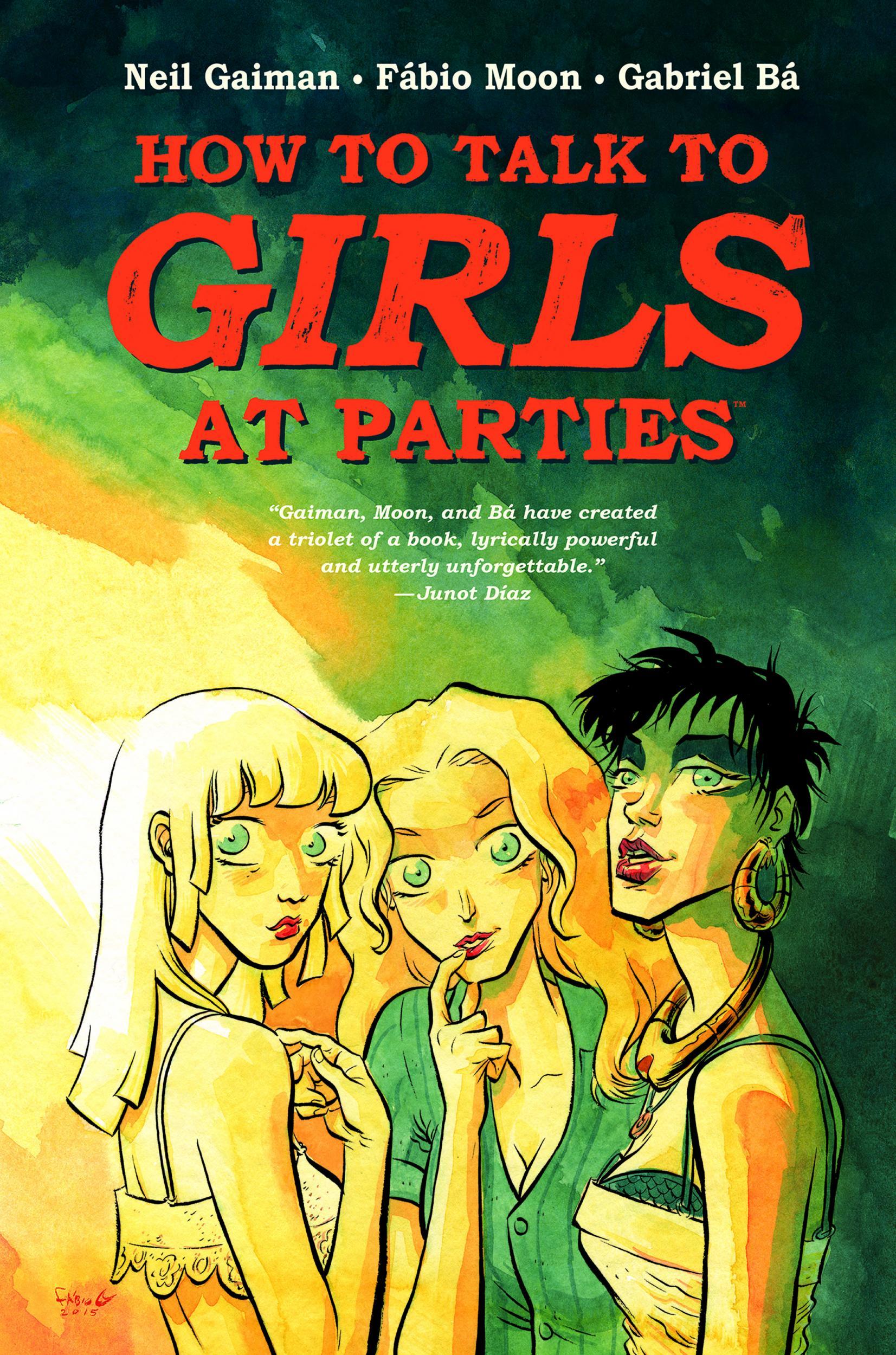How to Talk to Girls at Parties, Neil Gaiman, Fabio Moon and Gabriel Ba, review: an extra-terrestrial teen romance in punk-era Croydon.
A new graphic novel treatment lend Neil Gaiman's story a drier kind of foreboding serenity

First published a decade ago in prose form and nominated for a Hugo Award the following year, How to Talk to Girls at Parties is a short story by Neil Gaiman that is soon to become the latest in the list of the English fantasy author's screen crossovers, joining the likes of Stardust, Coraline and a pair of memorable recent Doctor Who episodes. Directed by John Cameron Mitchell (Hedwig and the Angry Inch, Shortbus), the Elle Fanning and Nicole Kidman-starring film will be released in 2017.
On one level, this graphic novel adaptation seems like an inevitable cash-in in advance of the movie's arrival; on another, it's a perfectly logical interpretation of the story by a writer who made his name in and still writes comics, most notably DC/Vertigo's fantasy epic Sandman. Drawn by Brazilian twin brother art team Fabio Moon and Gabriel Ba (most celebrated for the latter's work on My Chemical Romance singer Gerard Way's The Umbrella Academy titles), the book is a tale of extra-terrestrial teen romance in punk-era Croydon.
It tells of two boys, Enn and Vic, 15 years old and high on the possibility of meeting or even being shown interest from young women, who gatecrash a party; the confident Vic intent on kissing the prettiest girl there, the nervous Enn anticipating ending up “in the kitchen listing to somebody's mum going on about politics or poetry or something”. They arrive, a pulsing musical bassline reaching out into the street, the house irresistibly filled with only young women. The pair are lured inside, as if towards rocky outcrops by sirens.
Moon and Ba's street scenes are excellent, an evocative, identifiably red-brick London which places the piece very much within its own space, although the two boys at the heart of the story appear strangely more manly and less punk than the text demands. The artist's female figures are beautiful – necessarily so – their eyes beaming unnaturally wide, their alien origins revealed through their nature and clever visuals rather than green skin and bug eyes. When stellar interventions occur, one is reminded of Ian Gibson's work on The Ballad of Halo Jones.
The metaphors here aren't subtle; about the terrifying, glorious unknowability of young women to confused young men, with Enn's wide-eyed openness and nervous curiosity a familiar reaction amidst Gaiman's characters to anything beyond their knowledge. The original is short and punchy, and by decompressing it – by breaking short actions and exchanges down over a number of panels – the new treatment lends it a drier kind of foreboding serenity. Yet the story is still very recognisably the work of Gaiman, and its relative slightness is unlikely to disappoint his many fans.
How to Talk to Girls at Parties by Neil Gaiman, Fabio Moon and Gabriel Ba (Dark Horse, £12.99)
Join our commenting forum
Join thought-provoking conversations, follow other Independent readers and see their replies
Comments